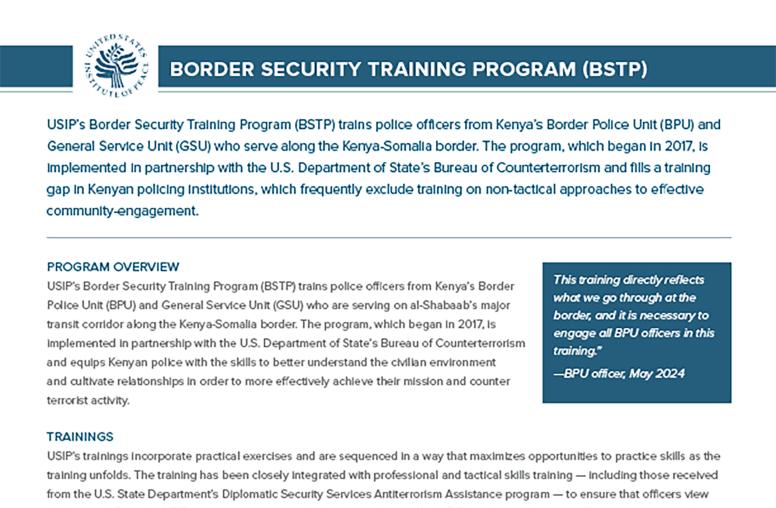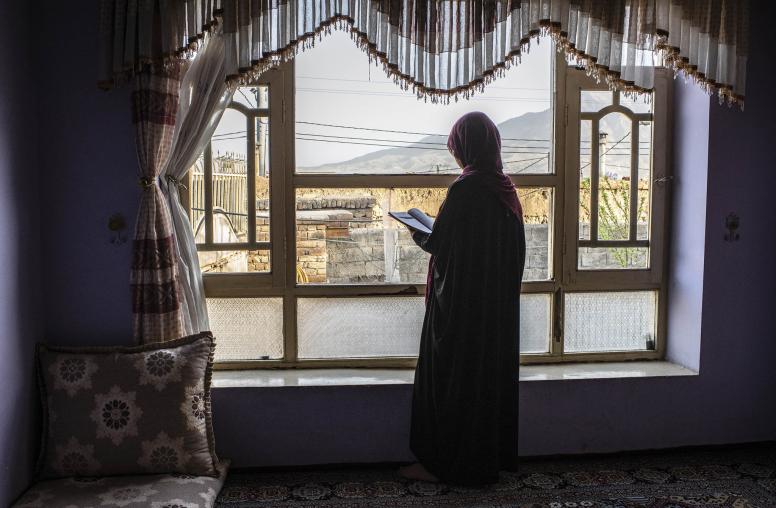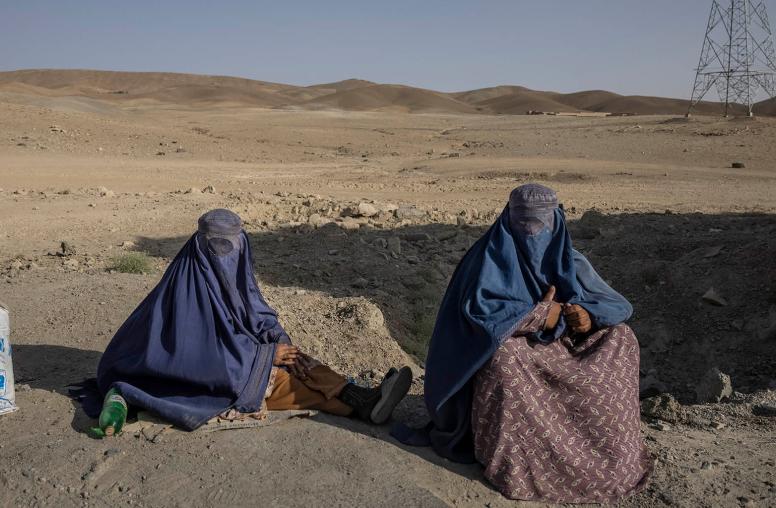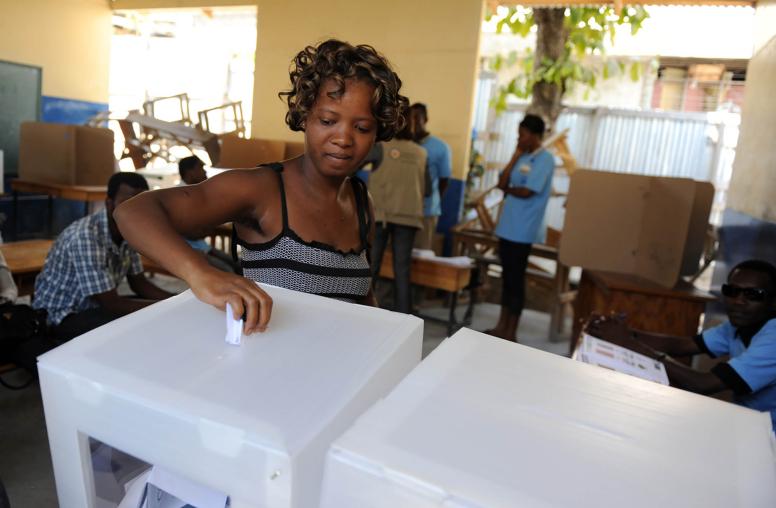How to Win on Women, Peace and Security
New strategies employing behavioral science may help push governments to implement National Action Plans.
For almost 15 years, Jacqueline O’Neill, now Canada’s first ambassador for women, peace and security, pondered a question that dogs policymakers everywhere and bears heavily on her work: How can governments speed up the implementation of major shifts in policy?

For O’Neill, the problem was specific. In 2000, the United Nations Security Council approved U.N. Resolution 1325, which calls for every nation to recognize the particular impact of war on women and girls and to ensure that women have a central role in peacemaking efforts. Five years later, U.N. Secretary-General Kofi Annan asked the world’s governments to create National Action Plans to bring the promise of 1325 to fruition. O’Neill, who advised dozens of countries on 1325, observed a frustrating phenomenon: Many governments had robust plans, but key components of them remained little more than words on paper. (USIP has worked on the issue for a decade.)
O’Neill’s quest for a more effective way to get NAPs implemented coincided with expanding research by social scientists into why things do—or do not—get done within every type of organization be it a government, business or nonprofit. The emerging answer was—in simplest terms—because normal human behavior tends toward inertia when translated to an organizational setting. Building off the growing use of behavioral science to inform policy and improve public services, O’Neill figured insights from the expanding field, such as the much-discussed “Nudge Theory,” might help solve her NAP problem.
O’Neill recalled what Paul Cairney and Richard Kwiatkowski, leading scholars in public policy and behavioral science, said about policymakers: They need to gather information quickly and effectively—and often in highly charged political environments—and that pushes them to rely on mental shortcuts such as ingrained perceptions and emotions. Scholars recognize that while shortcuts, known in behavioral science as heuristics, can be useful, they can also cause policymakers to fall back on the status quo.
“We need to better understand and navigate these human tendencies in order to make more rapid progress toward implementation of the NAPs,” Neill said.
So, she gathered experts in both behavioral science and inclusive security to explore how behavioral insights might be used to advance National Action Plans. The group turned to a framework for policymakers known by the acronym EAST—making change Easy, Attractive, Social and Timely—then customized elements of it to the NAP challenge.
As the 20th anniversary of 1325 approaches, here’s the advice they came up with for WPS practitioners and policymakers.
Make It Easy
To ease people into new processes, the EAST framework advises harnessing “the power of defaults” and reducing the “hassle factor.” That can include simple steps: Maximize the repeated use of templates or employ a box-check to habituate officials to collecting new information. For example, does analysis of protests against government policy include estimates of the gender distribution of demonstrators? A prompt such as a single, required click or tag can yield sex-disaggregated data. Such items can usually be added to existing standard forms.
The importance of “simplifying messages” can’t be overstated; ultimately, the NAP is also a communications document. Jargon and confusing, lengthy language cause readers and viewers to disengage. Consistent and accurate use of terms help create clarity.
NAPs should be customized to reflect, and integrate with, national priorities and policymakers’ interests. Most of the world’s 84 NAPs, for example, are structured around 1325’s four strategic pillars: protection, participation, prevention, and relief and recovery. Yet no government is organized that way. Several countries are now reframing their WPS commitments. For example, a key priority in Jordan’s NAP relates to violent extremism. In Tonga, the strategic-level focus is on climate change.
Implementation is also more likely when the benefits are spelled out clearly and driven home. An example particularly germane to conflict zones might be stressing that research shows women often raise issues addressing the root of a conflict—a key to sustainable peace—when they are meaningfully involved in peace negotiations.
Make It Attractive
Effective communications help attract attention for NAPs and lend urgency to their implementation. To a significant degree, that means invoking human narratives that illustrate the importance and impact of the plans for women. With such a backdrop, sympathetic policymakers can then reinforce NAP messages in policy documents and speeches—including those delivered by unconventional messengers such as military officers or economists. A specialized fund devoted to initiatives linked explicitly to NAP creates another avenue to strengthen implementation efforts.
Rewards and sanctions can shift behavior as well. A manager who says NAP is an important policy yet fails to score subordinates’ work in the area in job evaluations isn’t promoting increased attention. Likewise, recognizing progress and achievements on a NAP is a crucial tool for encouraging implementation. USAID, for example, established an annual agency-wide WPS award.
Finally, governments often respond to pressure from oversight bodies. Encouraging hearings or inquiries by lawmakers can create an opportunity to publicly highlight obstacles to action or a lack of commitment. Similarly, engaging civil society organizations to offer praise as well as highlight ongoing shortcomings can be another way to mobilize public officials.
Make It Social
As social beings, humans tend to follow the herd, amplifying behavior for better or worse. Pointing out negative behavior, therefore, should be done sparingly. For instance, WPS practitioners repeatedly cite the paucity of women at negotiating tables (in peace processes, women are 2 percent of mediators, 5 percent of witnesses and signatories, and 8 percent of negotiators globally). Understanding the extent of the problem is important, of course, but over-emphasizing the scale of exclusion might be counterproductive. Practitioners might do better to highlight what those few women have achieved. Offering concrete examples to emulate is one of the most effective ways to move people in a desired direction.
Sharing material online is perhaps the simplest form of social interaction. Through social media, practitioners can discuss successful means for developing and implementing plans, such as how to engage civil society or create a steering committee for a NAP comprised of policymakers from relevant government departments.
Contacts in the analog world can be even more powerful. WPS practitioners should nurture networks of gender specialists, promote gatherings at conferences, encourage engagement in community activities, and establish opportunities for academics, civil society, other gender points of contact within those organizations to exchange experiences and expertise. In 2020, for example, Canada and Uruguay will co-chair the Women, Peace and Security Focal Points Network, and co-host its annual gathering in Ottawa.
Creating opportunities or “safe space” for people to ask authentic questions or test assumptions might be helpful. At times, policymakers implementing NAPs hesitate to ask challenging questions or express doubts about policy options, fearful of giving offense in a time of fast-changing cultural and social norms.
Finally, commitments made in face-to-face meetings create a sense of shared responsibility and greater urgency for action whether they are expressed through a job description, evaluation or promises by senior-level officials.
Make It Timely
Applying principles like “prompting people when they are likely to be most receptive” can help accelerate change.
Periods of transition—from elections to war—often disrupt hard-to-alter behaviors and end in a period of reform. When such events are predictable, the lead up phase may be an optimal time to create a NAP. Conversely, NAP advocates may foresee regression coming out of a disruptive time. In that case, the best strategy may be designing NAPs that span government administrations (often four to six years), the idea being to force a new government that opposes a plan to cancel it outright rather than making the politically easier choice of simply failing to adopt one.
Furthermore, by emphasizing the linkages between WPS and current events, implementers can more effectively stimulate action. This may work best when preparation is possible, such as getting ready to counter arguments typically used to stymie action on WPS (for example: “The situation is too complex to bring more actors to the table now; we can do that once a peace agreement is reached”). Other forms of preparation might include scenario-based trainings for practitioners and women in civil society to react in real-time to events like terrorist attacks, peace talks or rising inter-communal tensions.
Finally, stressing short-term advantages that flow from a NAP may expedite action because people are more likely to respond to immediate costs and benefits. A convincing case in point: Naming a woman as lead negotiator of the Philippines government team in 2012 immediately resulted in an increase in Filipinos’ public trust in the peace process between the government and the Moro Islamic Liberation Front.
More Research
Existing research explores the impact of behavioral processes on peace, including the influence culture has on the ways in which people negotiate to end conflicts. Further explorations are underway on how to operationalize these insights, one of them being USIP’s partnership with ideas42, an organization focused on applied behavioral science.
As we learn more about how best to effectuate change, it is clear that behavioral science complements the various strategies used to drive the larger, transformational accomplishments so far on the Women Peace and Security agenda.
Tinu Luu is a senior program assistant for the Inclusive Peace Process Program at the U.S. Institute of Peace.



